Have you ever wondered how a switch works in an electrical circuit? It can seem like magic, but switches are the building blocks of electronics: they allow us to divert current and control the flow of electricity.
Switches help regulate our everyday devices such as lights, computers, cell phones, and other appliances.
In this article we’ll break down exactly how switches work in circuits so that you have a better understanding of this common yet mysterious device!
What is an Electrical Switch?
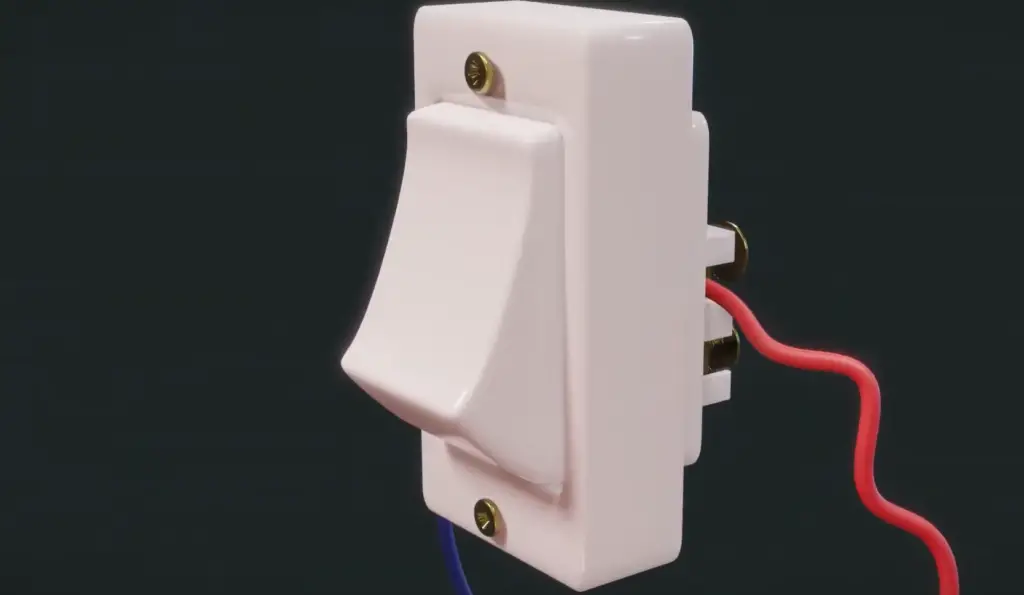
Circuit ON/OFF Operation
When a switch is in the “on” mode, electricity can flow through it. In this position, the two contacts are connected and current can travel across them.
When a switch is in the “off” mode, current cannot flow. This is because the contacts are open and there is no connection between them.
Circuit Switching Operation
Switches are often used to control the flow of electricity in a circuit. When a switch is closed, current can travel through it and complete the circuit. When it is open, no current can pass through and the circuit is broken.
For example, when you flip a light switch up or down in your house, you are completing or breaking the circuit. This allows you to control whether or not your light is on or off. [1]
Switch Types & Classifications
There are many different types of switches. Some of the most common include toggle, push-button, rotary, slide and rocker switches. Each type has its own unique characteristics but they all perform the same basic function: to break or complete a circuit.
Switches come in different types for different circuits. Each switch is rated to handle a certain amount of voltage and current. It is important to pick the right switch for each circuit. If you get the wrong type, it can be dangerous!
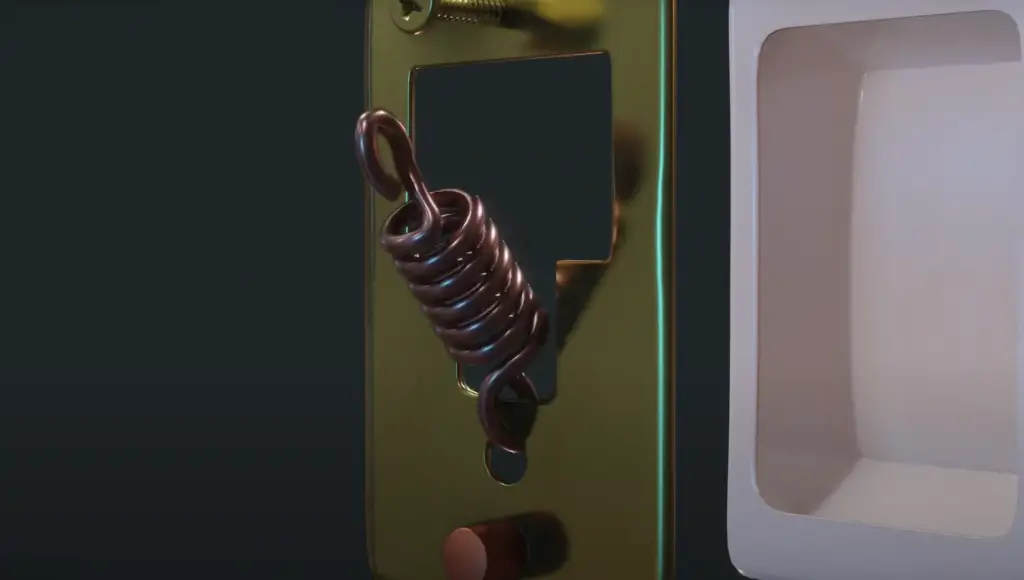
Types of Switches
Switch Classifications
Switches can be classified in several ways:
- Momentary switches are those that stay on only when pressure is applied and then turn off if the pressure is released. Push-buttons, toggle, and rocker switches are all examples of momentary switches.
- Maintained switches remain on even after pressure has been released. Rotary and slide switches are types of maintained switches, as they stay in the on or off position after the switch is operated.
- Pole/Throw refers to how many sets of contacts a switch contains. Single pole switches have one set of contacts, while double throw switches have two sets that can be connected or disconnected.
- Speeds are used to describe how quickly a switch can turn on and off. Slow-acting switches take longer to complete or break the circuit, while fast-acting switches can do so in less time.
Switches in Electrical Circuits: Pole & Throw
Switches are used in electric circuits. There are two types of switches: single pole and double throw. Single pole switches have one set of contacts and can turn the circuit on or off. Double throw switches have two sets of contacts that can either connect or break the circuit.

Switches are important components in any electrical circuit. They are used to control the flow of electricity and can be used to turn devices on and off. Understanding how switches work in circuits is an essential part of electronic engineering!
Manual Switch Operation
Manual switches are operated by hand. They can be toggle, push-button, rotary, slide or rocker switches and come in a variety of shapes and sizes.
When you operate a manual switch, the contacts inside open or close to complete or break the circuit. This allows you to control when current flows through the circuit.
Manual switches are commonly used in homes, businesses and other places. They can be used to control devices such as lights, appliances and motors.
Momentary Operation
Momentary switches are operated by applying pressure and then releasing it. Push-buttons and toggle switches are examples of momentary switches. When you press a momentary switch, it closes the circuit and allows electricity to flow.
When you let go of the switch, it opens the circuit and stops the electricity.
Momentary switches are used to turn things on and off quickly. They are found in security systems and other places where they need to work fast.
Alternate Operation
Alternate switches are operated by releasing pressure and then applying it again. Rocker switches are an example of alternate switches.
When you press the rocker switch once, it closes the circuit and allows electricity to flow.
When you press it a second time, it opens the circuit and stops the electricity.
Alternate switches are used to control things like lights and appliances. They are found in homes, businesses and other places.
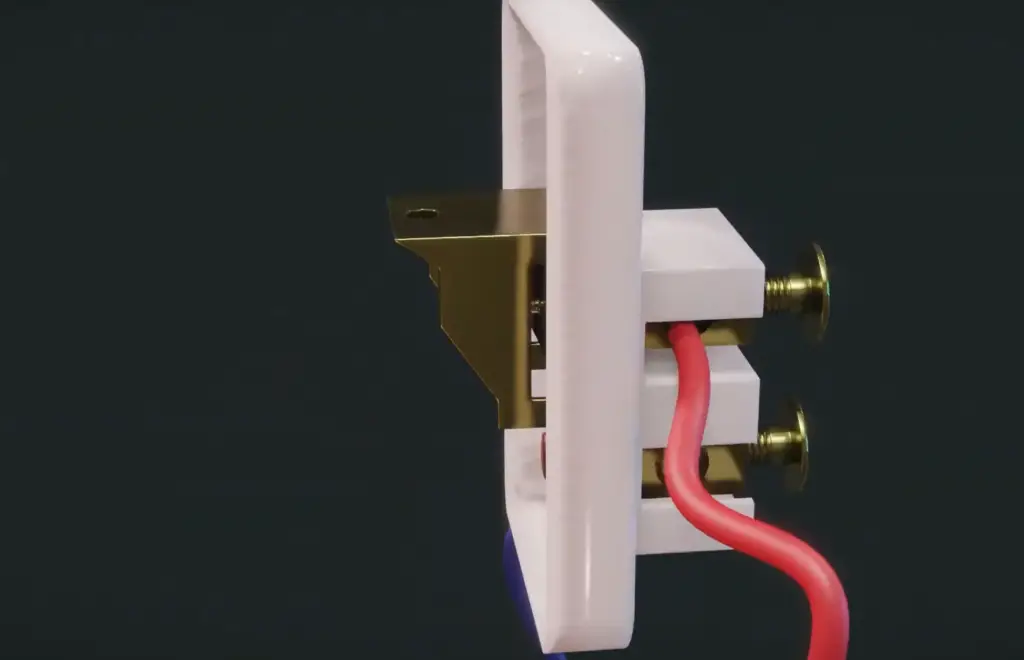
Switch Loads
Switches are rated for different loads. It is important to choose a switch that can handle the voltage and current of the circuit it will be controlling.
For instance, if you’re using a 12-volt DC circuit, you’ll need to use a switch rated for 12 volts. The same is true for AC circuits; make sure the switch is rated for the same voltage as the circuit.
You’ll also need to make sure that the switch can handle the amount of current flowing through the circuit. For example, if you’re using a 10-amp circuit, look for a switch with a 10-amp rating or higher.
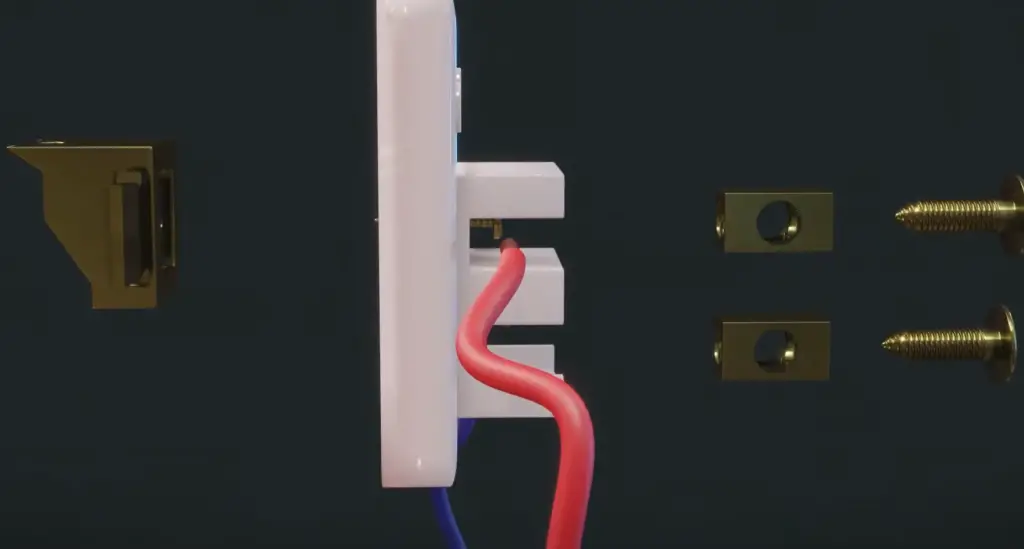
How Does a Switch Work in a Circuit?
Switches are used to control the flow of electricity in circuits. When a switch is closed, it allows current to flow and when it is open, it breaks the circuit and stops the current.
When you turn a manual switch on or off, it opens or closes the electrical circuit. Momentary switches open when you press them and close when you let go.
Alternate switches work in the opposite way – they close when you press them and open when you let go.
Switches come in different sizes and ratings to handle different loads, so make sure you choose the right switch for your circuit. Understanding how switches work in circuits is an essential part of electronic engineering!
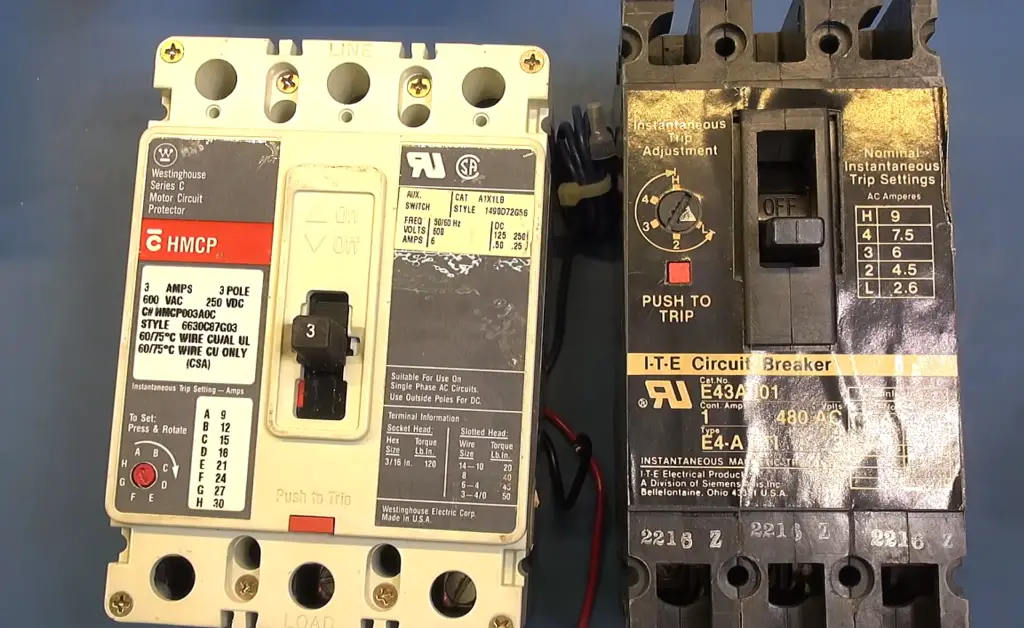
FAQ
How does a power switch work?
What are the different types of switches?
There are many different types of switches, including toggle, push-button, rotary, slide and rocker switches. Each type of switch operates differently – some open or close the circuit when you press them, while others open or close when you let go.
How do I choose a switch for my circuit?
When choosing a switch for your circuit, you’ll need to consider the voltage and current of the circuit. Make sure to choose a switch rated for the same voltage as your circuit, and one that can handle the amount of current flowing through it.
You’ll also want to make sure you choose a switch that is designed for the type of application you are using it for.
How does a switch work in a simple way?
A switch is a device used to control the flow of electricity in a circuit. When you turn a manual switch on or off, it opens or closes the electrical circuit.
Momentary switches open when you press them and close when you let go, while alternate switches work in the opposite way – they close when you press them and open when you let go.
By controlling the flow of electricity, switches can be used to turn devices on or off in a circuit.
How does a switch make or break a circuit?
A switch can make or break a circuit by being either on or off. When a switch is closed, it allows current to flow and when it is open, it breaks the circuit and stops the current.
Why use a switch in a circuit?
Switches are used in circuits to control the flow of electricity. They can be used to turn devices on or off, control the speed of a motorised device such as a fan or limit the amount of current flowing through a circuit.
By using switches in circuits, it is possible to create more complex and efficient electronic systems.
Can a switch open a circuit?
Yes, a switch can open a circuit. When a switch is open, it breaks the electrical connection in the circuit and stops the current from flowing.
What are the 3 functions of a switch?
The three main functions of a switch are to open or close an electrical circuit, control the speed of a motorised device, and limit the amount of current flowing through a circuit.
Switches come in different sizes and ratings to handle different loads, so make sure you choose the right switch for your circuit. Understanding how switches work in circuits is an essential part of electronic engineering!
What is the purpose of a switch in an electrical circuit?
The main purpose of a switch in an electrical circuit is to control the flow of electricity. Switches can be used to turn devices on or off, control the speed of a motorised device such as a fan or limit the amount of current flowing through a circuit.
By using switches in circuits, it is possible to create more complex and efficient electronic systems.
What happens when a switch is closed?
When a switch is closed, it completes the circuit and allows current to flow. Momentary switches open when you press them and close when you let go, while alternate switches work in the opposite way – they close when you press them and open when you let go.
Closing a switch is the most common way to control the flow of electricity in an electrical circuit.
What are the types of switches available?
The two main types of switches are momentary and alternate.Depending on your application, you may need a single pole switch, double pole switch or a three way switch. Other types of switches are also available such as push button switches, toggle switches and rotary switches.
What safety considerations should I keep in mind when using a switch?
When using a switch in an electrical circuit, it is important to use the correct type and rating for your application. Ensure that the wiring connections are secure and that all components are rated for the voltage and current they will carry.
Finally, remember to turn off power before working on any electrical circuit. Following these safety precautions will help ensure that your switches work properly and safely.
What other components should I use with a switch?
In addition to the switch, other components such as resistors, circuit breakers and fuses may be needed in order to safely control electricity in a circuit.
Depending on your application, you may need additional components depending on the current and voltage requirements of the circuit. Make sure that all components are compatible and rated for their application.
What other tips should I keep in mind when using switches?
When using switches, it is important to make sure that the connections are secure and that all components are rated for their application.
Finally, remember to always turn off power before working on any electrical circuit. Following these tips will help ensure that your switches work properly and safely.
What other uses do switches have?
Switches can also be used in many other applications, such as controlling the speed of a motorised device, controlling lights or limiting current through a circuit.
It is important to understand the principles behind how switches work in circuits before attempting any wiring. Understanding how switches work will help you design and implement systems with confidence.
Switches are a key component in any electrical circuit and understanding how they work is essential for designing and implementing efficient and reliable circuits.
How does a switch work in a circuit?
A switch is used to control the flow of electricity through an electrical circuit. When a switch is closed, it completes the circuit and allows current to flow.
Momentary switches open when you press them and close when you let go, while alternate switches work in the opposite way – they close when you press them and open when you let go.
Depending on the type of switch, other components such as resistors, circuit breakers and fuses may be needed in order to safely control electricity in a circuit.
How can I make sure my switch is working correctly?
When using switches, it is important to use the correct type and rating for your application. Ensure that the wiring connections are secure and that all components are rated for the voltage and current they will carry.
Finally, remember to turn off power before working on any electrical circuit. Following these safety precautions will help ensure that your switches work properly and safely.
How can I get more information about switches?
If you need more information about how to use switches in electrical circuits, there are numerous resources available online.
Many companies also offer product information and support for their products, so it is worth checking with them if you have any specific questions.
If you want to learn more about the theory behind how switches work in circuits, there are also many books and other resources available.
Why is it important to understand how switches work in a circuit?
Understanding how switches work in circuits is essential for designing and implementing efficient and reliable systems. Knowing the principles behind electrical circuits will help you select the correct type of switch for your application, as well as understanding what other components may be needed to ensure safe operation. Finally, remember to always turn off power before working on any electrical circuit.
Why is it important to turn off power before working on an electrical circuit?
It is important to turn off power before working on an electrical circuit for two reasons. First, you may accidentally cause a short circuit or damage components if the power is not turned off.
Second, electric shock can occur when working with live circuits so turning off the power reduces the risk of injury. It is important to always be sure that the power is off before making any changes or adjustments to an electrical circuit.
Does a switch need to be used in all circuits?
No, a switch does not need to be used in all circuits. In some cases, an always-on circuit may be preferable or necessary. However, it is important to understand how switches work in a circuit and the principles behind them before attempting any wiring.
Do I need to use a particular type of switch?
Yes, the type of switch you use will depend on your application. Different types of switches are suitable for different applications so it is important to understand the principles behind how they work in circuits before selecting one.
The voltage and current requirements should also be taken into account when choosing a switch. It is also important to use components that are rated for the voltage and current they will carry.
Does the voltage and current rating of a switch matter?
Yes, it is important to use components that are rated for the voltage and current they will carry.
If you attempt to use a component with a higher or lower rating than what is specified for your particular application, you could potentially cause damage to the circuit or even cause an electric shock. It is also important to use the correct type of switch for your application.
Can I control multiple circuits with one switch?
Yes, it is possible to control multiple circuits with one switch, depending on the type of switch and wiring setup you are using. However, it is important to make sure that all components are rated for the voltage and current they will carry, and to turn off power before making any changes or adjustments. If you are unsure about how to set up a particular circuit, it is best to seek professional advice.
Does a switch need to be wired in series or parallel?
This will depend on the type of switch and wiring setup you are using. In some cases, it may be necessary to wire the switch in series or parallel with other components in order to control multiple circuits.
Again, it is important to understand the principles behind how switches work in circuits before attempting any wiring. If you are unsure, it is best to seek professional advice.
Do I need to use any special tools when working with switches?
Yes, some specialised tools may be needed when working with switches, such as a multimeter or voltage tester. Always be sure to read and follow all safety instructions that come with any tools you are using while working on electrical circuits.
Additionally, it is important to use the correct type of switch for your application and to ensure that all components are rated for the voltage and current they will carry.
Can I use a switch to control an LED?
Yes, you can use a switch to control an LED.
Additionally, it is important to turn off power before making any changes or adjustments to the circuit. If you are unsure about how to set up a particular circuit, it is best to seek professional advice.
Useful Video: How Does a Circuit Breaker / Trip Switch Work? – Pt 1
Conclusion
Understanding how switches work in a circuit is essential when designing and implementing efficient and reliable systems. Different types of switches are available for different applications, so it is important to choose the right type and rating for your needs.
It is also important to make sure that all components are rated for the voltage and current they will carry and that all wiring is connected correctly.
Finally, always turn off power before making any changes or adjustments to a circuit. If you are unsure about how to set up a particular circuit, it is best to seek professional advice. We hope that this article has been helpful in understanding how switches work in a circuit. Good luck!
References
- https://components.omron.com/us-en/products/basic-knowledge/switches/basics





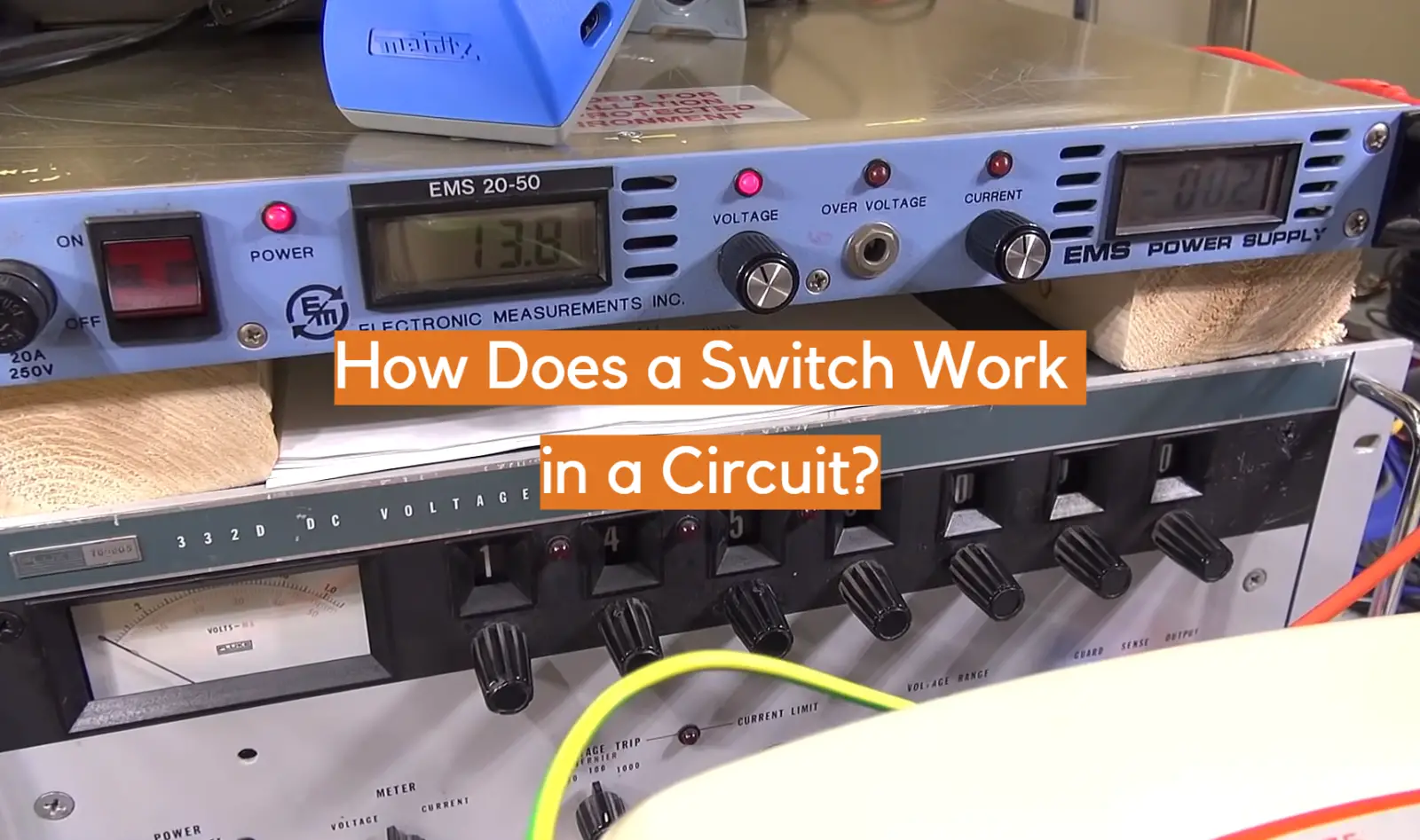




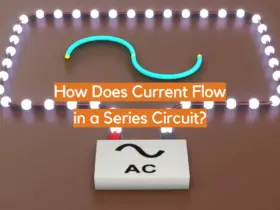



Leave a Reply